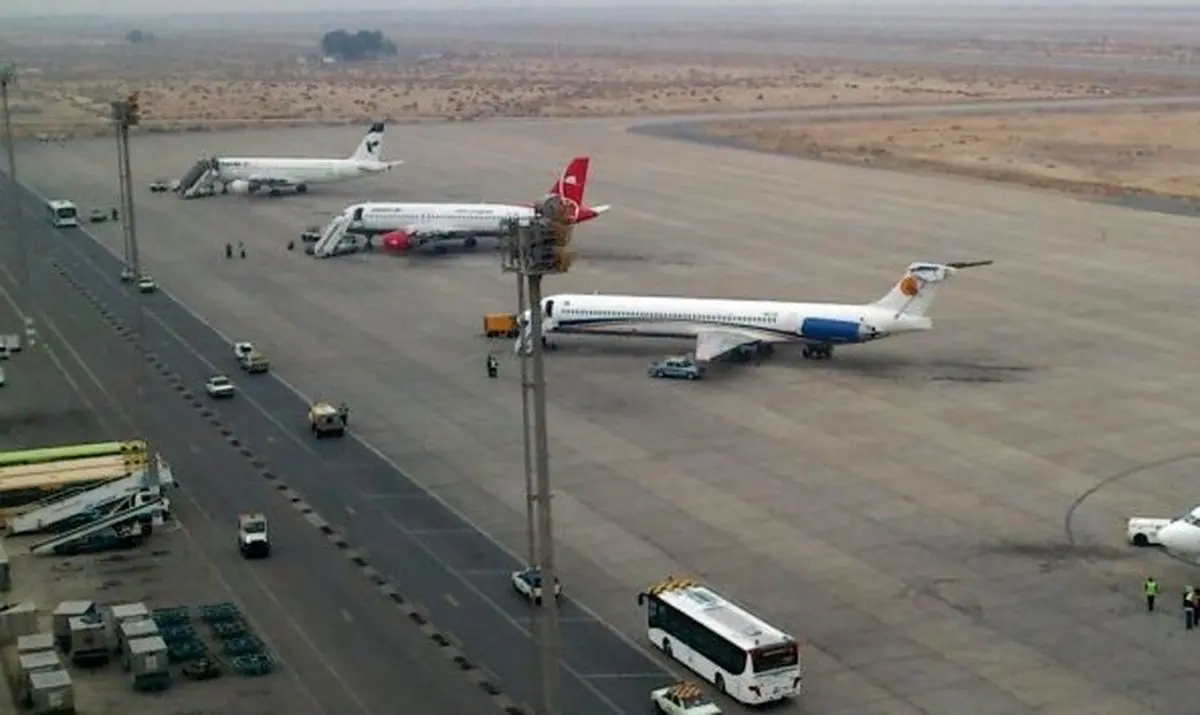French firm to invest for development of two Iranian airports

French construction company Vinci SA has signed a contract with Iranian firm Kayson Inc. to invest in the development of two Iranian airports, Iran Chamber of Commerce, Industries, Mines and Agriculture confirmed in a telephone conversation with the Financial Tribune.
ICCIMA declined to provide more details, but reports published in the local media put the agreement's value at $404 million.
Bourse News reported on March 19 that the cooperation included a $380 million development project in Mashhad International Airport located in the northeastern Khorasan Razavi Province.
Kayson will reportedly cooperate with the French company in the development of Isfahan International Airport, in the central metropolis of Isfahan–a popular destination among domestic and international travelers.
Financial Tribune could not independently confirm the details.
Vinci SA signed a preliminary agreement to run the projects in Mashhad and Isfahan, after representatives of the European company participated in a business forum in ICCIMA headquarters on January 31.
French Foreign Minister Jean-Marc Ayrault, who was accompanied by a 100-member economic delegation, was present at the forum.
The French company had been in talks to develop the two airports since January 2016, when President Hassan Rouhani traveled to Paris to sign business deals worth billions of dollars only a few days after the implementation of the nuclear deal.
Vinci is a French concessions and construction company founded in 1899. With a workforce of over 179,000, the firm is the largest construction company in the world by revenue.
"The French company has been in talks to build a 43,000-square-meter international terminal and a 25,000-square-meter domestic terminal in Mashhad International Airport," said Hossein Esfandiari, the deputy head of Iran Airports Company, which manages 54 airports across the country.
Kayson, founded in 1975, provides management, engineering, procurement, construction, financing and investment services worldwide. The company is active in a variety of sectors, including oil and gas, construction, rail industry, water and wastewater.
“The airport’s apron should also be expanded in line with the development of the terminals,” he said in February, adding that cooperation will be based on a build-operate-transfer contract.
According to Iran Airports Company’s CEO Rahmatollah Mahabadi, the annual capacity of Mashhad International Airport is estimated to reach 5 million passengers after the two terminals become operational.
Mashhad is a major international religious tourism hub visited by millions of pilgrims every year. In the Iranian year ending March 20, 2015, the holy city was visited by 25 million domestic and 1.5 million foreign visitors.
The city’s aviation infrastructure, however, has not kept pace with its booming tourism sector, which is the case with most Iranian airports, including Isfahan International Airport and Tehran’s Mehrabad International Airport.
Deputy minister of roads and urban development, Amir Amini, said in February that negotiations were underway to attract investments worth $3 billion in major Iranian airports, for which firm contracts worth about $649 million had been signed.
“We are planning to promote investment in important and profitable airports,” he said.
The deputy minister noted that the ministry seeks to develop the airports of Mehrabad, Imam Khomeini, Tabriz, Mashhad, Isfahan, Kerman and Shiraz mainly through foreign investment.
“About $2.35 billion worth of memorandums of understanding have also been signed to develop the airports of Mehrabad, Mashhad, Tabriz and Isfahan. We need a further $200 million to build a terminal in Shiraz Airport,” he said.
Earlier in 2016, IAC signed an MoU with Italy for the construction of a new passenger terminal in Tehran’s Mehrabad International Airport.
The MoU is between the Iranian airport and Italy’s SEA Group (Società Esercizi Aeroportuali), which is in charge of development and management of Italy’s Milano Malpensa airports and airport systems, including all services and activities related to the arrival and departure of aircraft, airport safety, passenger and cargo handling, and development of commercial services.
In the first phase, an 80,000-square-meter passenger terminal will be constructed. It could be expanded to 120,000 square meters in the future as demand grows, the agreement stipulates.
Mehrabad’s current annual capacity is 14 million passengers. The new terminal will add the same number of passengers to the airport’s capacity.
The plan, which is estimated to require an investment of €250 million, also includes landscaping and construction of parking space for 6,000 vehicles alongside the passenger terminal.
Revamping Iran’s airports has been a top priority for the administration of President Hassan Rouhani, which engineered a deal with world powers to resolve a longstanding dispute over Tehran’s nuclear energy program and remove sanctions imposed for years on the country’s aviation industry.
During Rouhani’s France visit, Iran also reached agreements with Aeroports de Paris and Bouygues SA for cooperation in the construction of a new terminal at Imam Khomeini International Airport.
The Ministry of Roads and Urban Development plans to increase IKIA’s capacity to 45 million passengers per year.
A €50 million investment agreement has also been signed with Vitali SPA—an Italian construction firm and general contractor—to develop Tabriz International Airport in the provincial capital of northwestern East Azarbaijan Province.
The agreement concerns investment, design and construction of a new passenger terminal in Tabriz airport in two development phases. In the first phase, the terminal is estimated to be built on a 20,000-square-meter area to accommodate the landing of one wide-body and two average-body aircraft at the same time.
END
